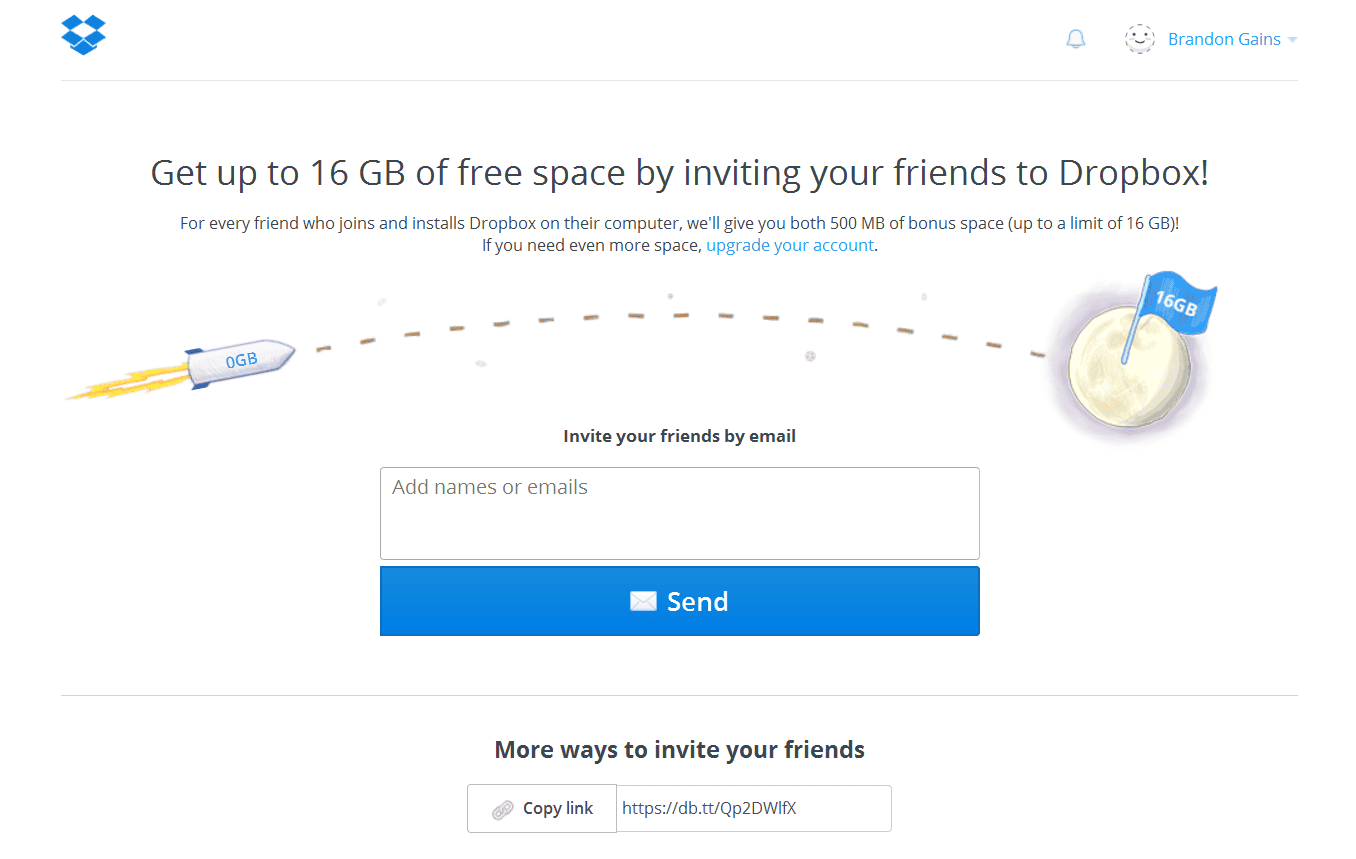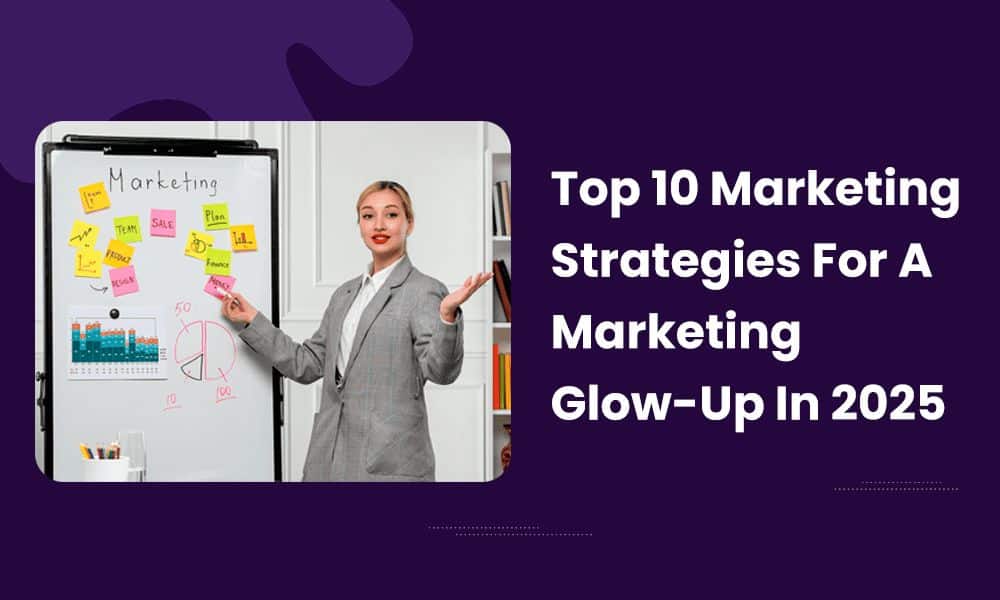A powerful marketing strategy isn’t about relying on just one tactic — it’s about finding the right mix of approaches that work for your business.
In 2025, cross-channel marketing will be more important than ever. Your customers aren’t sticking to just one platform; they’re engaging across multiple touchpoints, and your job is to meet them where they are.
This blog post will explore cutting-edge digital marketing techniques alongside time-tested traditional approaches to help you build a strong marketing foundation.
The key to success lies in identifying the right combination of channels for your audience and deploying them effectively to maximize engagement and drive growth.
1. Leverage Social Media Platforms
Social media remains one of the most powerful 2025 marketing trends. But its success depends on engagement, personalization, and strategic targeting.
Platforms like Instagram, LinkedIn, and TikTok offer businesses a direct line to their audiences, while AI-driven social networks continue to shape how brands interact with customers. Additionally, Google’s search algorithms now rank social media profiles, tweets, and other social content — making social platforms valuable for your overall online visibility.
Before you dive into every platform, identify which ones align with your audience. Rather than spreading yourself too thin, focus on the channels where your potential customers are most active and tailor your content accordingly.
For example, LinkedIn is ideal for B2B engagement, while TikTok thrives on short-form, viral content.
And one important point to keep in mind is that social media isn’t just about selling. Constantly pushing promotions can drive followers away. Instead, build trust by offering value — educate, entertain, and engage your audience through informative posts, interactive content, and behind-the-scenes insights.
Focus on relationship building and promote your products from time to time to ensure your brand stays at the top of mind without overwhelming your audience.
2. Invest In Content Marketing
Whether you focus on social media, email, or other platforms, content is essential. A well-crafted blog with valuable insights can help establish your brand authority. Your content should address customer pain points and highlight the solutions you offer.
Let’s say you run a SaaS company; you could create step-by-step guides on improving workflow automation. Similarly, an eCommerce brand might share product tutorials or styling tips.
The key is to create content for every stage of the buyer’s journey.
But creating content isn’t enough — distribution is just as important. Repurpose blog posts into LinkedIn articles, turn webinars into short social media clips, or send weekly email roundups of your best content.
A multi-channel approach ensures you reach more people without constantly having to create something new.
3. Utilize Email Marketing
Email marketing continues to be one of the most cost-effective and high-ROI strategies in 2025 — 14% of marketers surveyed agree!
Here’s how to maximize your email marketing efforts:
- Build a quality subscriber list: Focus on attracting engaged subscribers rather than just increasing numbers. Offer valuable lead magnets like e-books, exclusive discounts, or free resources to encourage sign-ups.
- Craft personalized email campaigns: Generic emails no longer work. Use segmentation to send relevant content based on customer behavior, interests, or purchase history. A well-timed, tailored email can significantly improve open rates and conversions.
- Leverage AI for automation: AI-driven email tools can analyze customer interactions and send automated emails at the right time. Whether it’s a welcome sequence, abandoned cart reminder, or re-engagement campaign, automation ensures you stay connected without manual effort.
By focusing on quality, personalization, and automation, email marketing can help you nurture leads, retain customers, and drive consistent business growth.
4. Implement Search Engine Optimization (SEO)
SEO in 2025 is no longer just about ranking for keywords — it’s about delivering the best possible experience for users.
With Google’s evolving algorithms, businesses must adapt to new search trends, including zero-click searches, AI-driven results, and search intent optimization.
Here’s what to focus on:
-
- Optimize for zero-click searches: Google now prioritizes featured snippets, People Also Ask sections, and AI-generated summaries. Your content should answer questions directly and concisely to increase visibility in these top results.
- Focus on search intent: Google prioritizes content that matches user intent, whether it’s informational, transactional, or navigational. Make sure your pages address what users are truly looking for.
- Improve E-E-A-T Signals: Google values experience, expertise, authoritativeness, and trustworthiness more than ever. This means:
- Showcasing expert authorship
- Including real-world case studies, statistics, and authoritative sources
- Building strong backlinks from reputable sites
- Technical SEO matters: Ensure fast page speed, mobile optimization, and structured data markup. Google’s Core Web Vitals now play a crucial role in rankings, affecting bounce rates and engagement.
- AI and SEO automation: Tools like ChatGPT, Google’s Search Generative Experience (SGE), and AI-driven keyword research can help streamline content optimization, identify trends, and personalize search experiences.
SEO in 2025 is dynamic and user-focused. Businesses can improve search rankings and drive sustainable organic growth by staying ahead of algorithm updates and optimizing for emerging trends,
5. Explore Influencer Partnerships
In 2025, influencer marketing continues to be a pivotal strategy for brands aiming to connect authentically with their audiences.
Brands receive an average of $4.12 for every $1 spent on influencer campaigns on Instagram, underscoring the profitability of these partnerships.
But the influencer landscape has also evolved, with a notable shift toward collaborating with nano-influencers — creators with smaller but highly engaged followings.
A significant 76% of brands have collaborated with nano-influencers, highlighting their growing importance in marketing strategies.
Nano-influencers typically possess between 1,000 to 10,000 followers and offer distinct advantages:
- High engagement rates: Their close-knit communities often result in higher engagement.
- Authenticity and trust: Their content resonates as more genuine, fostering stronger trust among followers. This authenticity can lead to increased credibility for the brands they endorse.
- Cost-effectiveness: Collaborations with nano-influencers are often more budget-friendly, making them accessible to brands of all sizes.
Brands are also increasingly embracing viral content creators. They are seen partnering with influencers immediately after a piece of content goes viral to capitalize on the trend’s momentum.
Recognizing the appeal of humor and relatability, brands are teaming up with meme creators to produce shareable content. This approach showcases a brand’s agility and relevance in pop culture.
6. Adopt Artificial Intelligence In Marketing
AI is transforming industries, and marketing is no exception. If you’re not leveraging AI to enhance both your workflow and customer experience, you risk falling behind.
In 2025, AI is no longer an optional tool — it’s essential for businesses aiming to stay competitive and maximize their marketing impact.
One of AI’s biggest advantages is its ability to personalize customer experiences. AI-powered tools analyze user behavior, preferences, and interactions to deliver tailored content, product recommendations, and highly targeted ads.
This level of personalization makes marketing more relevant and engaging, significantly increasing conversion rates. For instance, AI-driven chatbots provide instant, data-backed customer support while suggesting products based on browsing history.
Beyond personalization, AI helps marketers predict future trends and customer behavior by analyzing historical data. This allows businesses to:
- Optimize ad targeting and budget allocation by identifying high-converting audience segments.
- Forecast demand to ensure better inventory management and avoid stockouts or overproduction.
- A/B test campaigns in real-time, enabling quick adjustments for higher performance.
Brands using AI-powered predictive analytics report up to a 30% increase in marketing ROI, as they can fine-tune their strategies based on accurate data-driven insights.
7. Focus On Customer Experience
The customer experience (CX) is where digital and traditional marketing come together to create a seamless journey across all touchpoints.
Whether online or in-store, customers expect a consistent, frictionless experience. Take H&M, for example — they allow shoppers to scan items in-store and check out via their mobile app, blending the physical and digital worlds for added convenience.
Similarly, loyalty programs that reward both online and offline purchases help brands build stronger customer relationships.
A well-optimized UI/UX also plays a crucial role in enhancing CX. A smooth, intuitive interface — whether on a website, mobile app, or self-service kiosk — ensures customers can navigate effortlessly, find what they need, and complete their purchases without frustration.
Another proven business growth tactic is leveraging personalization. With the help of AI and data insights, businesses can tailor marketing messages, recommend products, and customize website experiences based on individual preferences.
A study by McKinsey found that companies excelling in personalization see 40% more revenue growth than their competitors.
At its core, a strong CX strategy isn’t just about meeting customer expectations — it’s about exceeding them, ensuring every interaction leaves a lasting, positive impression.
8. Engage In Community And Event Marketing
Even today, traditional marketing growth tactics like community engagement and event sponsorships remain powerful tools for building brand trust and loyalty.
Businesses that invest in local events, sponsorships, and in-person interactions can create a stronger emotional connection with their audience, something digital marketing alone cannot always achieve.
Community marketing involves actively participating in local events, networking with customers face-to-face, and supporting causes that align with your brand’s values.
For example, hosting a pop-up shop or partnering with a local festival allows businesses to showcase their products and interact with potential customers in a tangible, memorable way.

Similarly, event marketing — whether industry conferences, trade shows, or experiential brand activations — helps brands gain visibility and build credibility.
These events allow businesses to engage with their target audience directly, demonstrate product value, and establish trust through personal interaction.
However, the best results come from blending traditional event marketing with digital strategies.
Live streaming an event, creating social media buzz around it, and following up with attendees via email marketing ensures extended engagement beyond the physical experience.
9. Leverage Referral Marketing
Referral marketing, often considered the modern evolution of traditional word-of-mouth marketing, is still one of the most effective marketing strategies to acquire new customers.
People trust recommendations from friends, family, and even micro-influencers more than any advertisement, making referrals a highly credible marketing channel.
In the past, word-of-mouth relied purely on organic conversations. Today, businesses amplify this strategy through referral programs, loyalty rewards, and influencer collaborations.
A well-structured referral program incentivizes existing customers to spread the word — whether through discounts, cashback, or exclusive perks.
Dropbox’s famous referral program, which rewarded users with extra storage for inviting friends, helped the company grow by 3900% in just 15 months.

Traditional businesses can also integrate referral marketing by encouraging in-store customers to refer friends in exchange for exclusive deals or hosting local events where satisfied customers bring guests.
Additionally, leveraging digital tools like personalized referral codes and social media sharing can help scale these efforts without losing the authenticity of word-of-mouth recommendations.
By combining the credibility of traditional word-of-mouth with the reach of digital referral strategies, businesses can tap into their most valuable marketing asset—happy customers.
10. Measure And Analyze Performance
While this isn’t a marketing channel, it’s a powerful marketing strategy that determines the success of all your efforts. If you don’t measure and analyze your marketing performance, you won’t know what’s working, what needs improvement, or where to allocate resources effectively.
Data-driven decision-making is essential for optimizing marketing campaigns. Businesses should track key performance indicators (KPIs) like conversion rates, customer acquisition costs, return on investment (ROI), and engagement metrics across various platforms.
Tools like Google Analytics, EngageBay, Buffer, and more help manage your marketing activities and can provide valuable data to help refine strategies.
By analyzing performance, businesses can identify trends and customer behaviors. For instance, if an email campaign has a high open rate but low click-throughs, adjusting the call-to-action (CTA) or content might improve conversions.
Similarly, tracking website traffic sources can help determine which marketing channels are driving the most valuable leads.
Marketing is an ongoing process of testing and optimizing. A/B testing, competitor benchmarking, and predictive analytics can further enhance marketing effectiveness.
Wrap up
Effective marketing strategies in 2025 aren’t about choosing between digital marketing and traditional marketing — they’re about integrating both for maximum impact.
Businesses that stay agile, experiment with new tactics, and focus on delivering value will have a competitive edge. From social media marketing and SEO to AI-driven personalization and referral marketing, each strategy plays a crucial role in accelerating business growth.
However, success isn’t just about execution — it’s about continuous optimization and adapting to evolving trends. The key is to find the right mix of strategies that resonate with your audience and align with your business goals.
Are you ready to implement these powerful business growth tactics?
If you’re looking to automate your marketing tasks, check out EngageBay — an all-in-one marketing automation platform. From list management and lead scoring to email sequences, EngageBay helps streamline your efforts. Get a free demo today!
